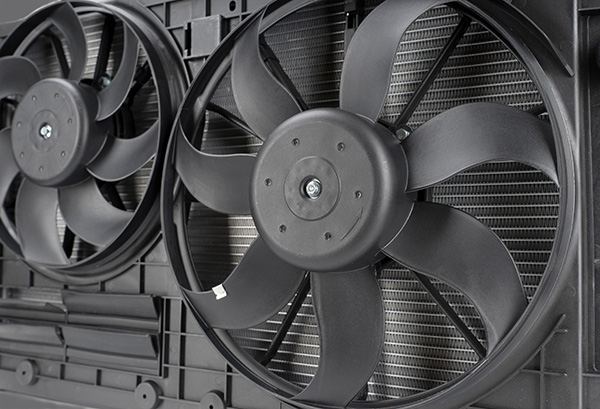
You turn off your car, pull out the key, and start walking away—then you hear it. The engine’s cooling fan is still running. It might catch you off guard, but in many cases, it’s just the system doing its job. On the other hand, if the fan runs for too long or starts behaving differently than usual, it could point to something that needs attention.
Modern cooling fans kick in based on temperature, not whether the engine is running. But knowing when it’s normal and when it signals a problem can help you avoid unnecessary wear or unexpected repairs.
Normal Operation After Shutdown
Under certain conditions, it’s perfectly normal for the fan to keep running after you park. If your engine has been working hard—especially in hot weather, stop-and-go traffic, or while using the A/C—the system may need a little extra time to cool things down.
Even though the engine is off, the cooling fan may continue to run for up to a few minutes to dissipate residual heat from the radiator, engine block, and under-hood components. This is a common feature in cars with electric fans, which can be activated independently of the engine thanks to sensors and electronic relays.
So if you hear the fan running for a short time after you shut off the car, and it turns off on its own soon after, there’s probably no need to worry.
When It's a Problem
If the fan stays on for more than five minutes, or if it’s still running long after the engine has cooled down, there could be an issue with the cooling system or the electronics that control it.
Possible causes include:
- A faulty engine temperature sensor sending incorrect data to the control module
- A stuck cooling fan relay that keeps the circuit closed even when it shouldn’t be
- Malfunctioning fan control modules or wiring issues
- Overheating due to low coolant levels or a failing thermostat
- In rare cases, a fan that never shuts off will drain the battery overnight, especially if the issue persists after multiple shutdowns.
If the fan keeps running every time you park, regardless of how far or fast you’ve driven, it’s a good idea to have the system checked.
Coolant Temperature Sensors
Modern cooling systems rely on temperature sensors to regulate fan behavior. These sensors detect coolant temperature and communicate with the car’s computer. If the sensor is stuck at a high reading—or if the wiring is faulty—the computer may think the engine is still hot, even when it’s not, and keep the fan running as a precaution.
In some cases, the check engine light may come on, but not always. That’s why a professional diagnostic scan can help pinpoint whether the sensor is behaving normally.
Other Components That May Affect Fan Behavior
The thermostat plays a big part in managing engine temperature. If it’s stuck closed, coolant can’t circulate properly, causing the engine to run hotter than it should. That added heat may keep the fan running long after the engine shuts off.
Low coolant can also trigger extended fan use. If there’s not enough fluid in the system, the coolant won’t be able to absorb and move heat efficiently, so the fan compensates by running longer.
Finally, the A/C system also impacts fan behavior. In some cars, turning on the A/C automatically starts the fan to help cool the condenser. If there's a glitch in the A/C controls or the pressure sensors, the fan could continue to run even when the A/C is off.
What You Can Do in the Meantime
If you’ve noticed the fan running longer than normal, check your coolant level first. Low coolant is one of the most common and easily fixed issues.
You should also listen for other symptoms like overheating, warning lights, or irregular temperature gauge readings. These can offer clues about what’s really going on.
Avoid trying to disable the fan manually or disconnect the battery, as that may cause more problems or interfere with the vehicle’s electrical systems.
If your engine fan is running too long after shutoff, or you’re worried about cooling system performance, visit Yates Automotive in Alexandria, VA. Our team can diagnose the issue, inspect your temperature sensors, relays, and fluid levels, and get to the root of the problem quickly.